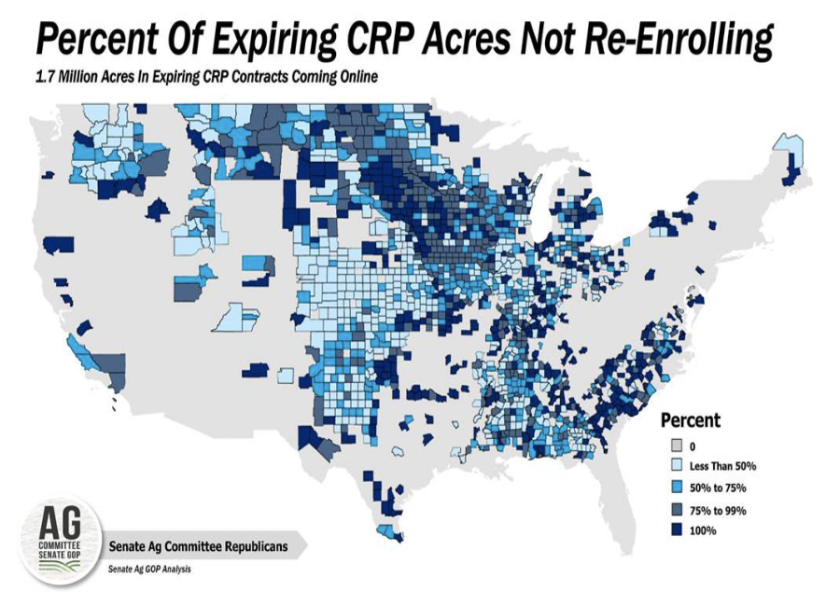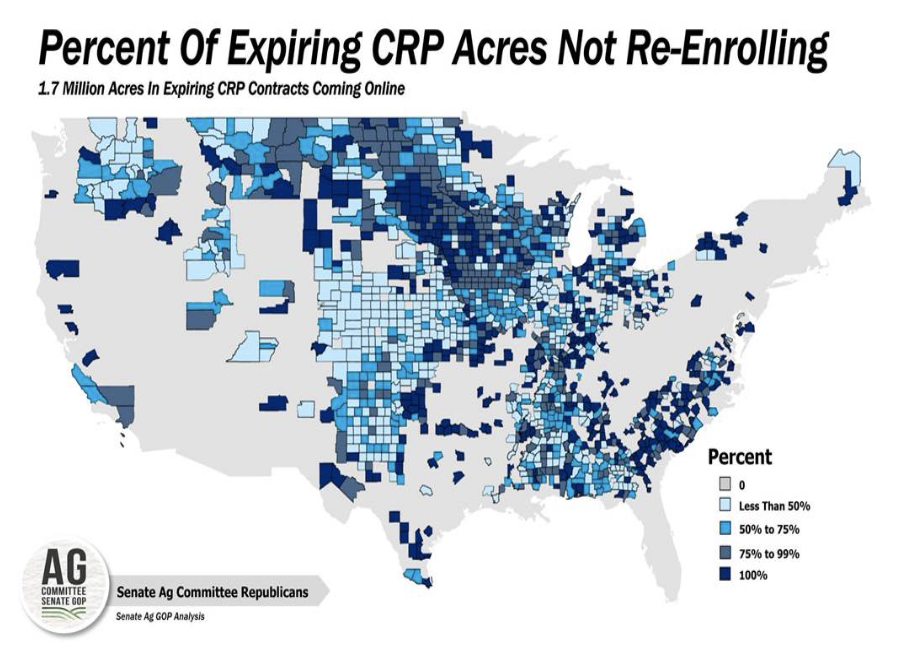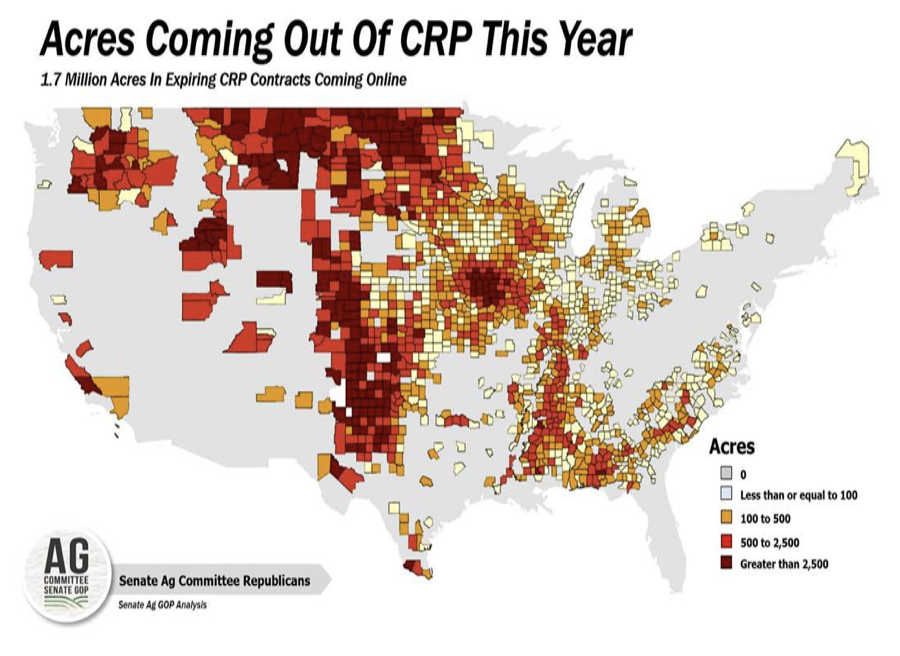CRP Contract Termination to Offset Global Food Crisis Gains USDA's Approval

On Thursday, USDA announced it will offer voluntary CRP contract termination to participants who are in their final year of their CRP contract to help producers make informed decisions about land use and conservation options amid Russia’s invasion of Ukraine and other factors.
“Putin’s unjustified invasion of Ukraine has cut off a critical source of wheat, corn, barley, oilseeds and cooking oil, and we’ve heard from many producers who want to better understand their options to help respond to global food needs,” said Zach Ducheneaux, USDA FSA administrator.
What to Expect
Producers with expiring CRP acres will find a letter in their mailbox from the FSA, outlining information in CRP flexibility, organic options and CRP Continuous re-enrollment for sensitive acres.
Participants who seek this one-time, voluntary termination, and gain approval from USDA, do not have to repay rental payments. But they must make requests for voluntary termination in writing through their local USDA office.
If approval for voluntary CRP termination is granted, producers can move forward with the transition after the nesting season to plant a fall crop before Oct. 1, 2022.
Current CRP Numbers
According to USDA, 1.7 million acres of CRP contracts are coming online this year.


Focusing on the global food shortage, many have suggested putting CRP acres back into production—particularly for wheat, as Ukraine produced 6.7 million hectares of winter wheat last fall alone, and SovEcon predicts that number to be cut by half this year.
National Grain and Feed Association seems merit in the USDA's plan to mitigate global food shortages.
“We should explore every option available to assist countries facing challenges in feeding their growing and hungry populations due to the decline of exports caused by Russia’s invasion of Ukraine," said Mike Seyfert, NGFA president and CEO. "These actions will allow producers to respond to market signals by putting farmland back into production while providing proven environmental best practices on working lands."
Organic Options
Flipping CRP back into production will cause and unseen uptick in pesticide and herbicide usage, according to USDA.
To mitigate application, USDA suggests producers consider organic production—an approach the agency supports with technical and financial assistance to help producers plan and implement conservation practices.
CRP Alternatives
Producers who are not planning to put their expiring CRP land back in production can capture funds through the Transition Incentives Program (TIP), which may provide two additional annual rental payments from USDA when that land is sold or rented to a beginning or veteran farmer or rancher or a member of a socially disadvantaged group.
More on CRP:
> New Plantings in CRP Not Feasible, According to USDA
> Vilsack Says Only 1.8 Mil. of 4 Mil. Expiring CRP Acres Will Be Re-Enrolled
> Ukraine's Embattled Farmers Running on Empty as World Faces Possible Food Crisis







